









From the UCI Road World Championships Richmond 2015 website:
The Road World Championships (Worlds) is cycling’s pinnacle event, held annually in an international city as chosen by the Union Cycliste Internationale (UCI) through a competitive bidding process similar to the Olympic Games.
Worlds is a nine-day event, featuring 12 Championship races for Elite Men and Women, Under 23 Men and Junior Men and Women. It is a rare opportunity for the athletes to compete for their country, just as they do during the Olympic Games.
Ashland, Virginia—self-designated decades ago as the Center of the Universe—is a small town about 15 miles north of Richmond, home of Randolph-Macon College. Ashland is a railroad town predating the Civil War, originally built by executives of the RF&P Railroad.
However, that doesn’t stop the town being very bicycle friendly. Every nice weekend day cyclists swarm at Ashland Coffee and Tea, taking breaks during their enjoyment of rural Hanover County roads.
In the spirit of race week, Ashland’s Main Street Association invited merchants and residents to welcome cyclists and fans by decorating bicycles.
I want to share with you a sampling of what you can see if you walk around the bicycle gardens in the center of the Center of the Universe!
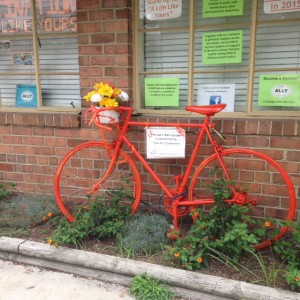

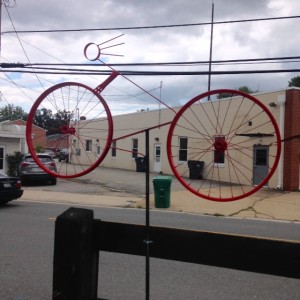
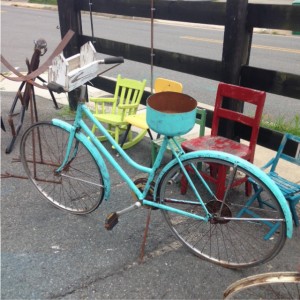
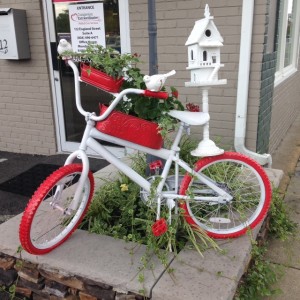
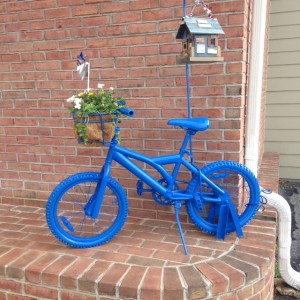
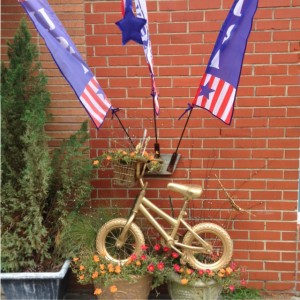
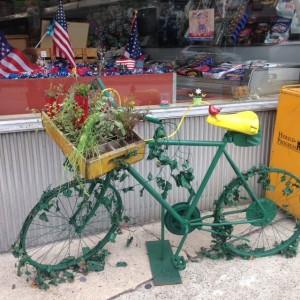
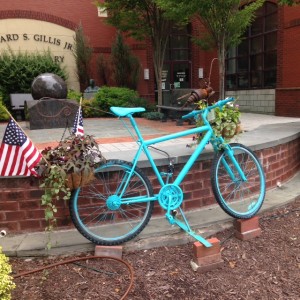
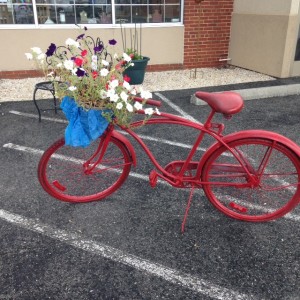
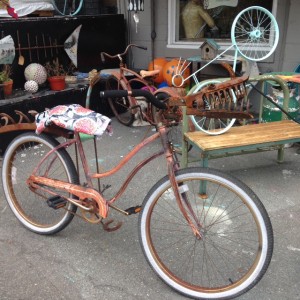
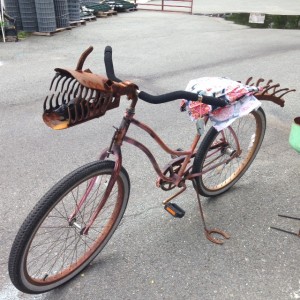
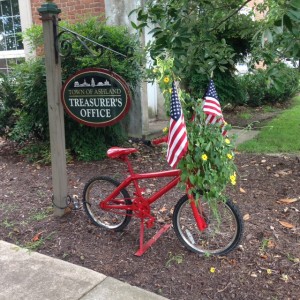
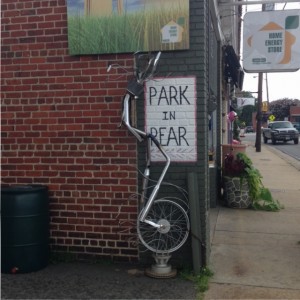
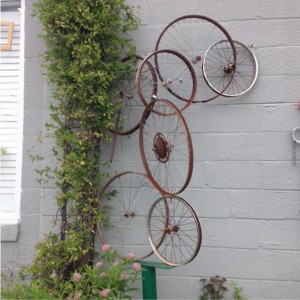
Ashland offers tourist information at the Train Station Visitor’s Center. You can get a bike garden scavenger hunt map there, as well as a self-guided walking tour of historic places.
And in downtown Ashland, you can get good food that does not come from a chain restaurant! (Of course, if chains are your thing, there are bunches around the I-95 exit, and along Rt. 1 and Rt. 54, very convenient.) There are antique stores and fun shops. Bottom line: something for everyone. Y’all come!
From the UCI Road World Championships Richmond 2015 website:
The Road World Championships (Worlds) is cycling’s pinnacle event, held annually in an international city as chosen by the Union Cycliste Internationale (UCI) through a competitive bidding process similar to the Olympic Games.
Worlds is a nine-day event, featuring 12 Championship races for Elite Men and Women, Under 23 Men and Junior Men and Women. It is a rare opportunity for the athletes to compete for their country, just as they do during the Olympic Games.
When my interest is piqued, of course I turn to research. A friend told me that the gift shop at Lewis Ginter Botanical Gardens has two books on the history of bicycle racing in Richmond. True confession: I did not buy them—but you might want to. In the meantime, I did go on-line. As usual, Wikipedia has a lengthy article on the history of the bicycle. You might also be interested in visiting the Smithsonian Institute website, for their series America on the Move. These include pictures. Also, A Pictorial History of the Evolution of the Bicycle has great pictures
I’ll share with you some of what I learned. First of all, the immediate ancestor of the bicycle was the Draisine, also called a Velocipede, Hobby Horse or Swift-Walker. It was designed by Baron von Drais in 1817 and looked like a bicycle, but had no pedals. So one moved by walking along, feet on the ground, while seated. It was made of wood, with iron bound wheels, and weighed nearly 50 pounds. Even so, speeds of eight miles per hour were feasible.
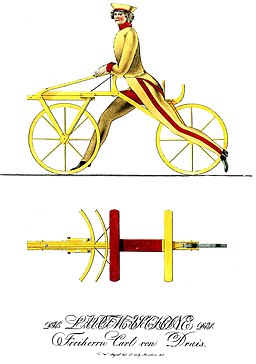
Although a two-wheeled bicycle with pedals may have been created as early as 1839, Pierre Lallement filed the earliest and only patent for a pedal-driven bicycle, in the US in 1866.

Soon after, in 1869, a pedal-bicycle was invented for ladies.
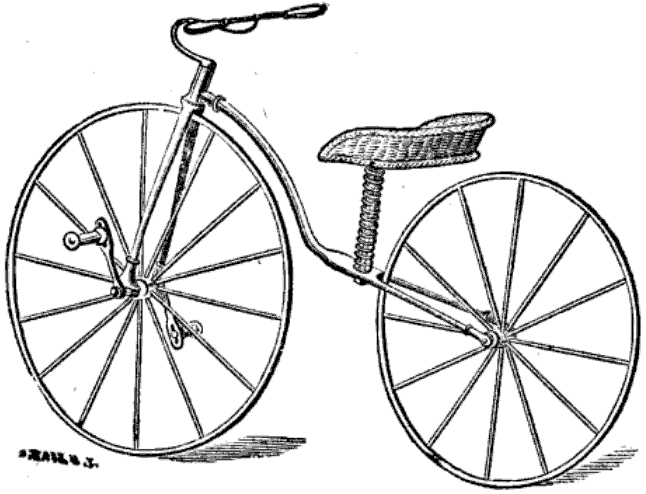
The next major development came in 1885, when John Kemp Starley created—but never patented—the first successful “safety bicycle.” His improvements included a steerable front wheel, wheels of equal size, and a chain drive to the rear wheel. Bicycles became very popular for both work (commuting, deliveries, etc.) and pleasure uses. In 1895, Chicago put its mailmen on bicycles. The safety bicycle was the first bicycle suitable for women.


As far as I’m concerned, developments since then are all just tweaking! As the automobile became the preferred mode of individual transportation in the US, bicycles have been taken over for pleasure and exercise. As of the 1970s, cycling was the nation’s leading outdoor recreation. Still, bicycle messengers flourish in major US cities. In other parts of the world, the bicycle is still the “workhorse” of preference. In the People’s Republic of China, the Flying Pigeon was the government approved form of transportation, considered essential for every household, along with a sewing machine and a watch. In the 1970s, the post-Mao leader Deng Xiaoping defined prosperity as “a Flying Pigeon in every household”—which reminds me that in the presidential campaign of 1928, a circular published by the Republican Party claimed that if Herbert Hoover won there would be a chicken in every pot. A lucky duck. True confession: my mind works in mysterious ways.
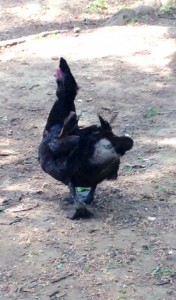
And that seems as good a place as any to end this!
From the UCI Road World Championships Richmond 2015 website:
The Road World Championships (Worlds) is cycling’s pinnacle event, held annually in an international city as chosen by the Union Cycliste Internationale (UCI) through a competitive bidding process similar to the Olympic Games.
Worlds is a nine-day event, featuring 12 Championship races for Elite Men and Women, Under 23 Men and Junior Men and Women. It is a rare opportunity for the athletes to compete for their country, just as they do during the Olympic Games.
The fun begins! No doubt we will hear and read a lot about the races in the week ahead. Your challenge for this week is to consider the following writing prompts and write a story—or more than one! Fiction, genre, style, none of that matters to me. Just be sure bicycles are a central element. Please share what you create!
Write a story in which a bicycle is central to love and/or romance.
Write about how and why this bicycle is on the roof of a dry cleaning business.
Write a story about biking under the influence. (My preference is that the message be it isn’t a good thing to do—but that isn’t a rule!)
Write about someone who commutes by bicycle.
Write about bicycles that are able to leap tall buildings at a single bound!
And in the spirit of Stephen King (a write-by-the-seat-of-his-pants author who starts with a single question): What if a cyclist on a country road suddenly realizes that his bicycle is turning to jelly? What if bicycles could reproduce the way (choose an animal) do? What if bicycles had secret night lives? Or start with your own What if...?
Enjoy!
Not that I am a cycling enthusiast, but any event this big piques my interest. Some weeks ago, when I first became aware of the upcoming races, I started noticing bicycles—and they are everywhere! Did you ever count how many clutches of bicycles are fastened to motor vehicles?
Although the Virginia DOT says that all vehicular laws apply to bicycles, clearly this isn’t the case with parking.
Also, DUI statutes don’t apply to bicycles in Virginia. Although one can be charged with DUI/DWI for drunk bicycling in 22 states, Virginia isn’t among them. Still, in my opinion, one would be stupid to do it. The person most likely to be injured is the cyclist, but think of the trauma to family, and to the motorist who might have killed someone. It’s like riding without a helmet: just because you can doesn’t mean you should!
But I digress. I was talking about bicycles being everywhere, and used for all sorts of purposes. When I was a Nimrod this summer, I intentionally saved this picture for now.
And perhaps the sweetest picture of all—
Check out the UCI Road World Championship website to learn more.

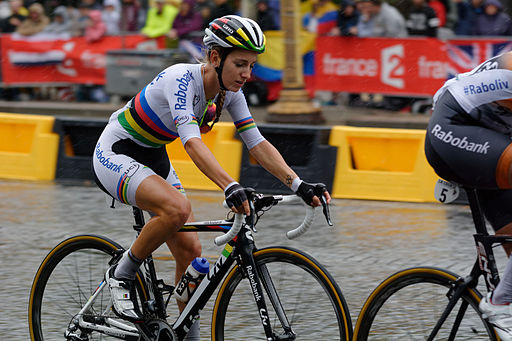
By youkeys (La Course by Le Tour de France 2015) [CC BY 2.0], via Wikimedia Commons
I first saw this little cutie in the bathtub. Not being a firm believer in reincarnation, I snuffed it.
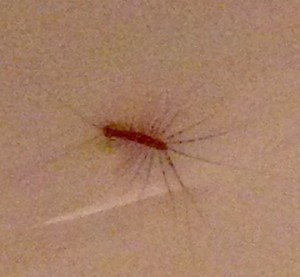
Over the following days and weeks, they seemed to be everywhere: medicine cabinet, kitchen floor, toothbrush holder. . . . But no matter how often they ended up like this,
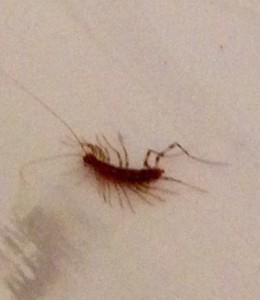
there were always more of them. They were especially noticeable—and challenging—because we weren’t having problems with ants, spiders, flies, etc. Why these critters?
So I did what any scientist would do—I researched the subject. (You do recall that I’m a scientist by training?) The first thing I learned is that my housemates are Scutigera coleoptrata, or common house centipedes. The second thing is that, oddly enough, centipedes don’t exist. Centipedes never have 50 pairs of legs (i.e.,100 legs). Although some species have as many as 191 pairs, all centipede species have an odd number of pairs of legs as normal adults. The common adult house centipede has 15 pairs of legs. Juveniles are shorter and have fewer pairs, adding pairs as they grow.
If you look closely, a centipede is actually beautiful. The legs are long, slender, and thread-like. Their movement is not only fast (1.3 ft. per second) but graceful. On females, the last pair of legs is more than twice as long as the body, which can be up to 1.5 inches. The bodies are long and flat, with three dark racing stripes running head to back.The legs have black and white banding.
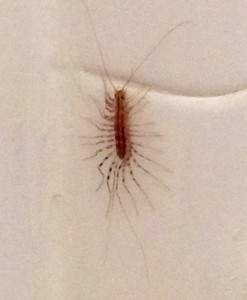
One of their most endearing qualities is that they run away from me. But the real reason I have come to love centipedes is that they are good eaters: cockroaches, flies, moths, mosquitos, crickets, silverfish, earwigs, spiders—almost any insect pests. They do kill their prey with venom, but they rarely sting humans and when they do, (I’ve read) it’s much like a mosquito bite. Maybe the reason we aren’t having problems with other insects is that we have our own little squad of live-in exterminators!
Sometimes things just come together. I’ve had a long-standing interest in graveyards and cemeteries. My all-time favorite is Mount Auburn Cemetery in Cambridge, Massachusetts. The primary picture on my website was taken there! It is the first garden cemetery in the United States, established in 1834.
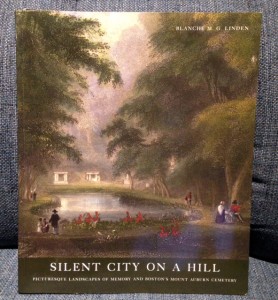
So, of course, when I moved to the area, I visited Hollywood Cemetery, the third garden cemetery in the United States.

At that time, I lived in the McMurdo house in Ashland, built in 1858. Apparently Stonewall Jackson headquartered there briefly during the battles around Richmond—briefly meaning only a few hours. But it piqued my interest in the Civil War.
After touring the White House of the Confederacy, I visited the gift shop there. After visiting historic sites or museums, I always check the gift shop for off-beat books. In this instance, I found The Story the Soldiers Wouldn’t Tell: Sex in the Civil War.
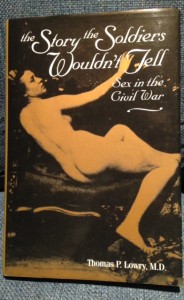
So when the call went out for stories for Virginia Is For Mysteries, it all came together. I wrote “Death Comes to Hollywood Cemetery.” My amateur detective is Clara, a good natured prostitute who plies her trade with fetishists in Richmond and the surrounding area during the Civil War.
I love it when everything comes together!
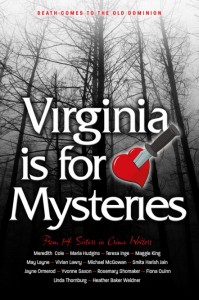
I have a long history of public speaking–lectures, workshops, panel presentations-facing with a group of friends or hundreds of strangers makes no difference to me. When I can work from an outline or talking points or questions, no problem. Humorous and lively.
When reading aloud in public, the problem is that it is reading! This photo from my reading during the first week of Nimrod this year depicts the problem perfectly.
I have not yet mastered the ability to read something verbatim while maintaining eye-contact with the audience. Awkward. And distancing.
On the other hand, reading aloud to myself is essential, especially dialogue. It’s like practicing job interview questions and answers aloud in front of a mirror. Sentences are a whole lot smoother in thought than in practice. If the words do not fall smoothly from my lips, it can not ring true in the reader’s ear. It is absolutely necessary for dialect. Does it sound overdone? Reading aloud can work for narrative as well, Identifying sentences that are too long or stilted. Sometimes, it is helpful to have someone read your work aloud while you listen. Good luck!
I was sitting in my recliner, much as I am now, sipping iced decaff coffee and leafing through catalogues from discount booksellers. (My favorites among these are Edward R. Hamilton Bookseller and Daedalus Books.)
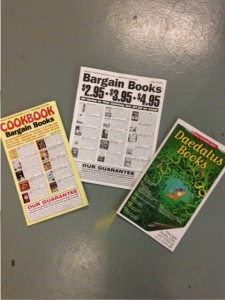
After ordering more books than I have shelf-space for—about half cookbooks for a vegan kitchen and half books I think will be useful writing references, such as Funerals to Die For—my thoughts drifted, as they are wont to do. I’ve been collecting cookbooks since long before I started writing fiction. Over the years, I’ve donated and gifted hundreds of cookbooks and mysteries. Even bookcases in every room of the house except the bathroom weren’t enough!
As best I can remember, my first connection between fiction and food was the Rex Stout mystery series featuring Nero Wolf. I’ve had the The Nero Wolf Cook Book so long I can’t remember.
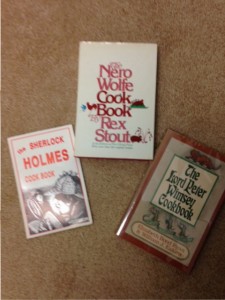
I became enamored with Sherlock Holmes in college. But Dorothy L. Sayers is probably my all-time favorite mystery writer. She didn’t make a big deal about food in her Lord Peter Wimsey/Harriet Vane books. Still, I had to have The Lord Peter Wimsey Cookbook.
Perhaps mystery writers are especially attracted to food. Think poison? These two books are especially appealing to me.
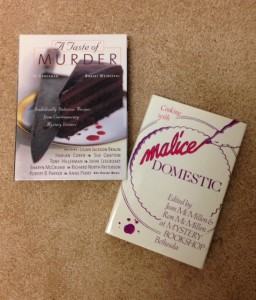
More than one mystery has taken up a food theme. Perhaps the best known is Diane Mott Davidson. She’s written 17 novels featuring Goldy Schulz, a small town caterer who solves mysteries on the sides. Goldy Schulz also has a cookbook, although I haven’t seen it.
Of course, food isn’t solely the purview of mystery writers. See for yourself.
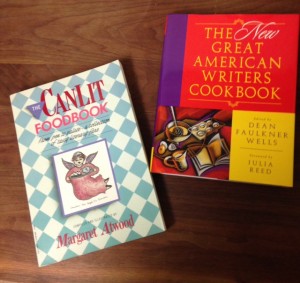
And as in all fan activities, Jane Austen leads the pack. I don’t have them, but look for The Jane Austen Cookbook, Cooking With Jane Austen, Jane Austen and Food, Tea with Jane Austen, Tea With the Bennets, Dinner With Mr. Darcy, What Jane Austen Ate and Charles Dickens Knew.
And the options are never-ending. Consider A Feast of Words, for Lovers of Food & Fiction by Anna Shapiro. It includes excerpts from 25 novels, from Jane Austen to Alice Munro. Shapiro comments on the food scenes and includes her own menus and recipes inspired by each work. Eat Memory: Great Writers at the Table, edited by Amanda Hesser comes from her work as the New York Times Magazine‘s food editor. In this book she presents 26 food memories from leading writers, and the recipes they involve.
If you are more into the words than the food, consider this slim volume: Food Tales: A Literary Menu of Mouthwatering Masterpieces. It presents 8 stories, including “A Vicomte’s Breakfast” by Alexandre Dumas, “The Luncheon” by W. Somerset Maugham, and “Tortillas and Beans” by John Steinbeck.
Once you start on writing and food, it’s a short step to food writers. One of my favorites is M.F.K. Fisher, How to Cook a Wolf. She wrote it in 1942, the point being to cooking during the WWII food rationing.
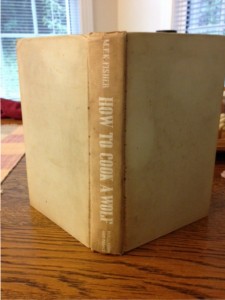
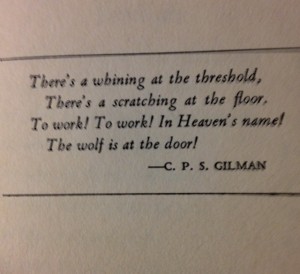
But enough! There must be an end somewhere!
What are your favorite cookbooks?
Don’t collect cookbooks? Do you have a collection that’s taking up your house?